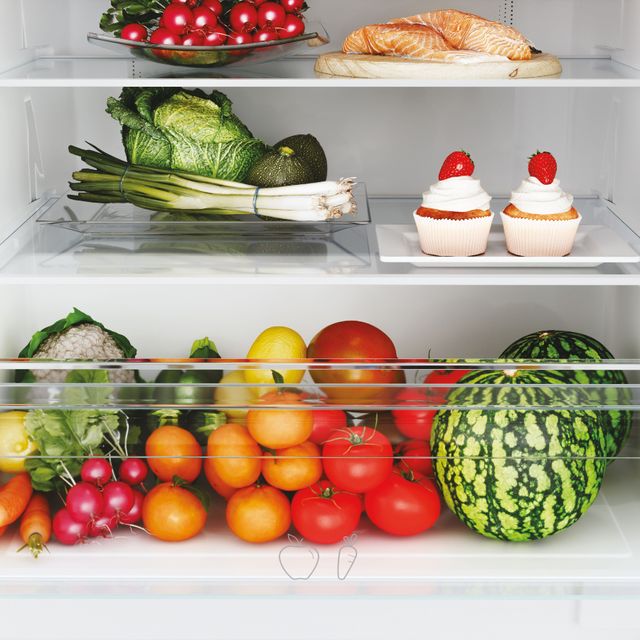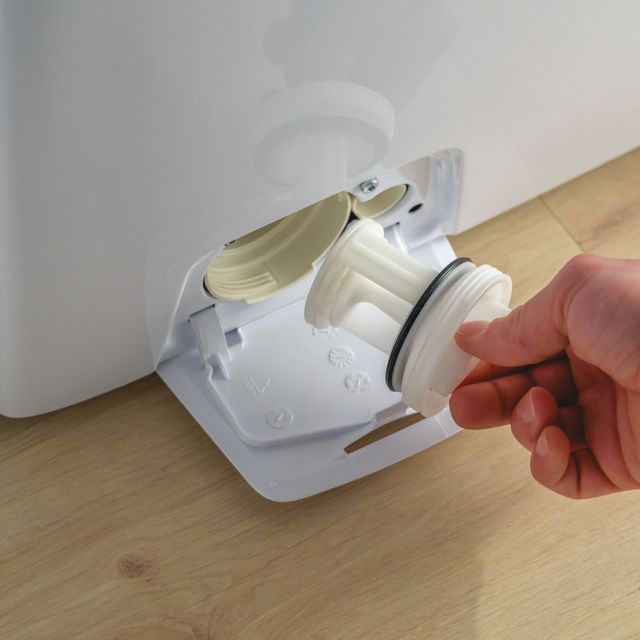Common washing mistakes
It's almost always small distractions that do the damage on laundry day, even though in other cases, it’s our own false beliefs that mislead us. So, what are the most common washing machine mistakes many of us are making?
Faded clothing
A real classic, this laundry faux pas is caused by the dispersion of colour: at the end of the cycle, you realise that your red top has run, colouring all the other lighter-coloured garments. Admittedly, a somewhat predictable scenario. The only solutions are to separate your laundry, wash new garments separately, run various different cycles for your light, dark and coloured garments, or use colour-catcher in-wash cloths. Lastly, there are a number of washing machines that have specific programmes, such as the Candy Perfect Mix & Wash 20°, which allow you to wash different colours and fabrics together at 20°, with the same results as you would expect to achieve washing instead at 40°. What to do if the damage is done? Don't panic, we have a few tricks up our sleeves to remedy the situation. For starters, it’s good practice to not allow the garment to dry, especially in the sun, since the heat could lock in the absorbed colour. Secondly, you’ll need to attempt stain removal as soon as possible. If the garment that has absorbed the colour is white, all you’ll need to do is hand wash it in baking soda and specific whitening detergent; if the item of clothing that has absorbed the colour is instead another coloured garment, you can try treating it with a bleach product intended for delicate and coloured fabrics. Should none of these solutions work, the only remaining option is to dye the garment a darker colour, so as to hide the damage.
Tissues in pockets
It might seem daft, but how many times have you had to remove tissues from trouser pockets, remove tissue residue from other garments, and clean the washing machine door because of a left behind piece of paper or tissue? Always make sure that you haven’t left any degradable materials such as paper or tissues in pockets before starting the washing cycle. That said, if the damage has been done, all you’ll need is to give the laundry a really good shake to get rid of any fragments of paper before using a lint roller to remove any more stubborn visible residue, especially from dark clothes. If you use a dryer, the pieces of papers will most likely fall off the garments on their own accord, and you’ll simply be able to remove them from the filter alongside the usual fluff.
Incorrect temperatures
When compiling a list of the most common washing machine faux pas, washing at the wrong temperature certainly deserves a mention. The direct cause of ruined fabrics and faded colours, this mishap can cost you dearly: never wash wool or delicate synthetic garments at high temperatures. Wool, in fact, requires a short and sweet cycle, with the spin-dryer set to low, as if you were washing by hand. To avoid making mistakes, check the washing instruction labels on your clothes and set your washing machine programmes accordingly. If your favourite wool jumper has been shrunk by several sizes and become matted, you can try to ‘resuscitate’ it using one of the following methods:
- With baking soda. Dissolve two tablespoons of baking soda in warm water and soak the garment for a few hours, gently rubbing it and smoothing out the knit; then, rinse with a little fabric softener.
- With milk. Leave the garment to soak for around an hour in a solution of cold water and milk in equal parts. Once again, we recommend rinsing with fabric softener at the end of the treatment.
- With ammonia and turpentine. Fill a bowl with ten litres of warm soapy water, add ½ tablespoon of alcohol, 1 tablespoon of turpentine and 3 tablespoons of ammonia. Submerge the matted jumper and leave it to soak for a full day.
Overly aggressive pre-washing
Overly energetic pre-washing is the first of the three false beliefs - in addition to using too much detergent and insisting on overly heavy loads - that lead to washing faux pas. Especially if performed on delicate fabrics, pre-washing can in fact wear out prints and even clothing fibres, leading to the formation of holes. If you have to remove a stubborn stain, opt for a manual pre-treatment of the garment using a specific and not overly aggressive detergent; leave to act for a few minutes before washing the item as normal in the washing machine.
Too much detergent
Now it might seem like a contradiction, yet using an excessive amount of detergent in the washing machine does not guarantee an impeccable cleanse; on the contrary, too much foam can lead to the formation of mould, produce unpleasant odours, and leave halos and residue on your favourite clothes that can even cause allergies. We therefore recommend sticking to the instructions on the packaging and adapting the detergent dosage on the basis of the amount of clothes to be washed and water hardness.
Overly heavy loads
Excessively heavy loads are also counterproductive: filling the washing machine drum more than the recommend amount for the drum size will not save you time or money; conversely, by not allowing the water and detergent to get into the fibres, the laundry will remain dirty and you will have wasted the entire washing cycle.
How to avoid damaging laundry in the washing machine
Naturally, all of these errors can be avoided. Debunking false beliefs is the first essential step, followed by fully understanding your washing machine functions, so as to suitably use all of the programmes without exaggerating in terms of loads, detergent and pre-treatments. So, what are the tricks to ensuring optimal results?
Carefully read the labels
Taking just a few extra seconds to read the labels will prevent the overwhelming majority of washing machine mishaps. Separating colours and fabrics is necessary to enable you to select the most appropriate type of programme for your clothing on a case-by-case basis; in doing so, your clothes will last longer and will remain in tip-top condition.
Buy a smart washing machine
Of course, technology provides a valuable helping hand. Fortunately, we now have smart washing machines that can assist us in our choice of programme, as well as in the management of both water and energy. The Candy Bianca, in addition to various other models from the Candy range, has a Kilo Detector function that adjusts the duration of the cycle (and subsequently the energy consumption), as well as the quantity of water according to the weight of the laundry detected in the drum. What’s more, you can control your energy consumption in real time thanks to the Candy Simply-Fi App, which boasts additional programmes to ensure that your laundry is always immaculate.
Proper maintenance
Periodically cleaning and sanitising your appliance is fundamental to ensure the consistent efficiency of your washing machine over time. In fact, dirt and detergent residue lurking in the drum, door seal and dosing draw can, in the long run, cause unpleasant odours and less than perfect results, in addition to the wearing of the washing machine itself. We recommend using washing machine sanitising tablets every so often to help you keep your machine clean and running at maximum efficiency.





